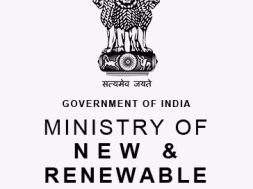
India Surpasses 50% Clean Power Milestone Ahead of Schedule, Saves ₹4 Lakh Crore in 2024 – EQ
In Short : India has reached a major clean energy milestone, with non-fossil sources now comprising 50% (242.8 GW) of its 484.8 GW total installed power capacity—five years ahead of its 2030 target. This includes renewables, large hydro, and nuclear power. In 2024 alone, India saved ₹4 lakh crore by reducing fossil fuel dependence, significantly boosting energy security and climate resilience.
In Detail : India has achieved a major clean energy milestone by reaching 50% non-fossil fuel power capacity in its total energy mix. This accomplishment comes five years ahead of the nation’s target under the Paris Agreement, originally set for 2030.
As of June 2025, India’s total installed power capacity stands at 484.8 GW. Of this, around 242.8 GW comes from non-fossil fuel sources, including renewable energy, large hydro, and nuclear power.
The renewable energy segment alone contributes 184.6 GW to the non-fossil portfolio, highlighting the country’s significant progress in expanding solar, wind, and bioenergy projects. Large hydro and nuclear power together form the remaining capacity.
This early achievement reflects India’s focused policy push, investment-friendly reforms, and proactive participation from private developers in the clean energy space. It underscores the country’s global leadership in energy transition.
In 2024 alone, India saved approximately ₹4 lakh crore in fossil fuel costs due to its reduced dependency on coal and oil-based power generation. This financial saving strengthens macroeconomic stability and reduces import reliance.
The transition has also contributed to greater energy security and a cleaner environment. It supports India’s climate action goals while meeting the growing energy demands of its population and industries.
The government has credited this success to the combined efforts of central and state policies, rapid solar park development, improved transmission infrastructure, and technological innovations in storage and forecasting.
India’s early progress boosts confidence in achieving its longer-term commitments, including reaching 500 GW of non-fossil capacity by 2030 and achieving net-zero emissions by 2070.
With strong momentum, the country is now focused on accelerating energy storage, green hydrogen development, and offshore wind capacity to build on its non-fossil foundation and maintain its trajectory as a global clean energy leader.












